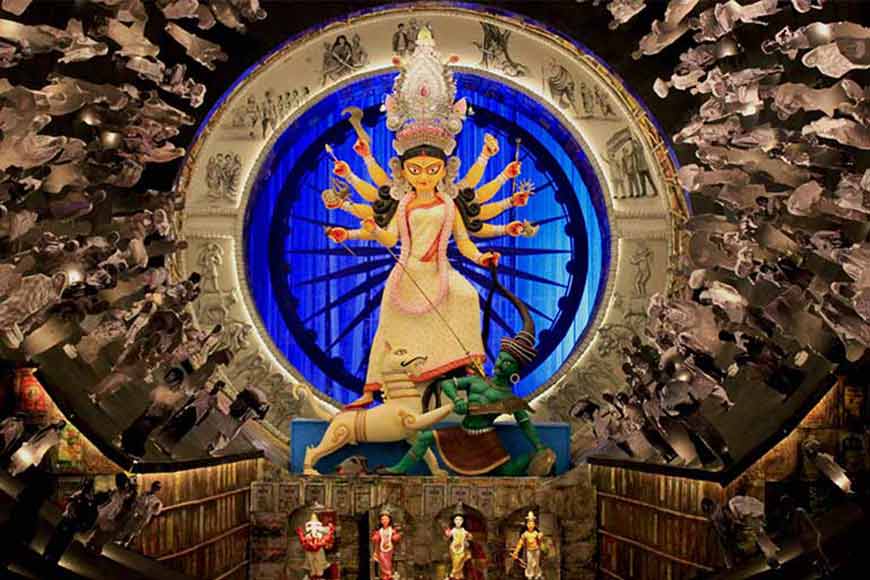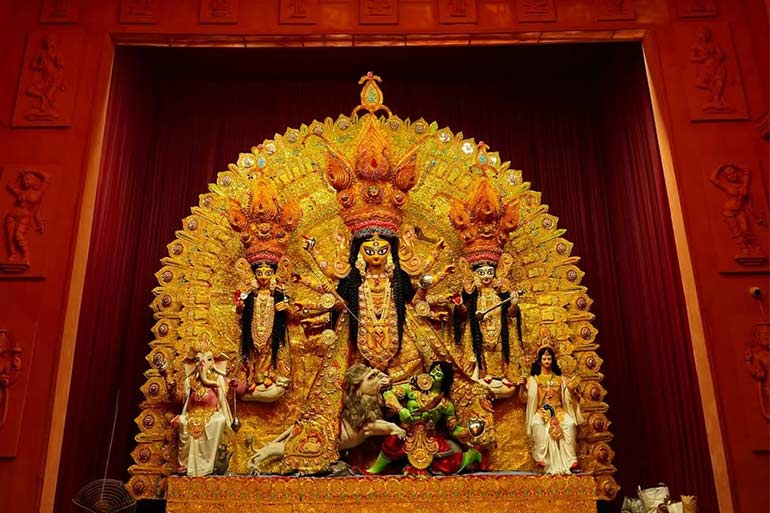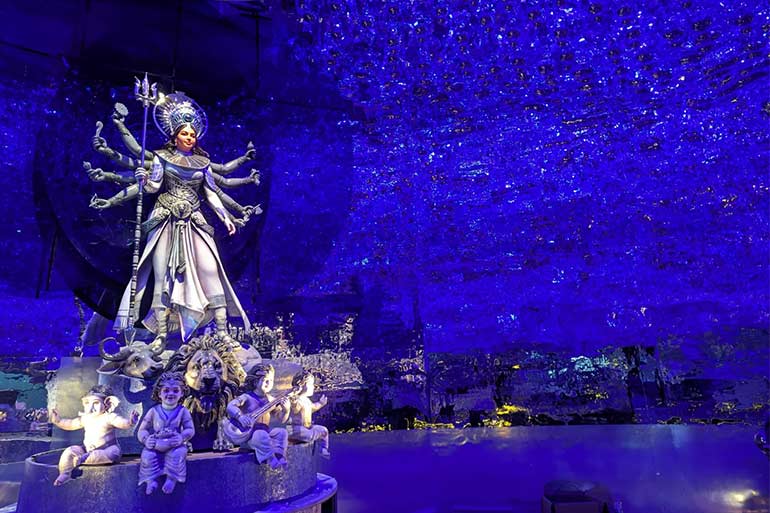Kolkata’s Durga Puja: A Celebration of Art, or a Loss of Devotion? GetBengal Story

Durga Puja in Kolkata has now become one of the biggest business hubs on the world map. Even if we leave out the big corporate houses, Durga Puja has turned into a major earning opportunity for small and medium-scale traders.This is surely a positive thing. Everything that could possibly grow around Durga Puja — has now become an automatic system. But behind all this grandeur and glamour, has the main essence of devotion slowly faded away?
Bengalis are known for their “baro mashe tero parbon” — thirteen festivals in twelve months. If we look closely, we’ll see that almost every festival is based on religion or traditional customs, and the foundation of all these is devotion.In the last few years, Kolkata’s Durga Puja has become a huge art exhibition. Organizers now call it one of the world’s biggest “public art exhibitions.”
This puja-art is no longer limited to clubs or artists — it has created new business opportunities, investments, brand value, and a glamorous competition. No doubt, it has brought profits, not losses. But somewhere, devotion has disappeared from Bengal’s biggest festival.

Many people refuse to accept this conflict between devotion and art. Some believe there is no contradiction at all — that people have simply changed their way of celebrating festivals with time. It’s about adapting to the era. But even then, no one can deny the rat race of competition.
In recent years, there have been open rivalries between clubs, nasty remarks, group fights, boycott of award companies, and even paid entry to see idols. Notice the word “thakur dekhte jawa” — going to see the goddess. People in Kolkata still say this. Earlier, this was a part of the pure festive joy.
But now, people don’t just go to see the idol — they go to see the theme or the art installation. And many admit, they don’t even understand what they’re seeing. Of course, understanding or not understanding is a personal matter.
But since it’s being called a public art installation, the artists do have some responsibility. If the festival belongs to the people, then the artwork should be made keeping the people in mind. Maybe that’s where something is missing.
Where art was supposed to create a direct connection and conversation with the common people — is that really happening? Or are the themes being made mainly for certain groups — especially for the award-giving companies? That’s a question many are asking now.
The idea of live art or performance art has always involved direct participation from people. But when that connection is replaced with distance — and club organizers skillfully avoid involving people — can we still call it a people’s festival? Such questions are now tangled deep within society.

An invisible gap is growing between artists and craftsmen. At the same time, the inner limitations of art are hiding the real issues of time. If Durga Puja art becomes only a personal expression of the artist, then yes — there is a gap! Devotion has faded from view.
And if the people’s festival no longer ends with the people themselves — then when puja viewing becomes ticketed, doesn’t it show that Bengal’s biggest festival is turning exclusive? That only the rich or upper classes can get a proper view of the goddess, while others, lost in the crowd, get to see the “art” for just two minutes? Is this kind of divide what Bengal’s greatest festival ever wanted?
Note:
Translated by Krishnendu Mitra
To read the original Bengali article, click here.










